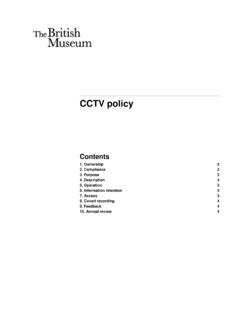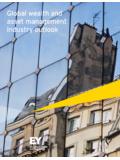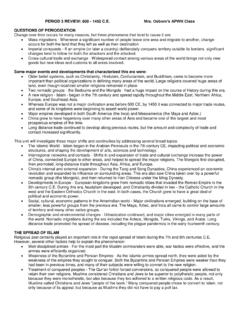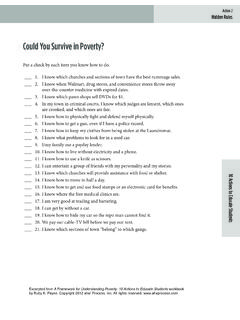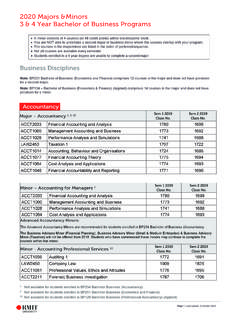Transcription of The wealth of Africa - British Museum
1 The wealth of AfricaThe Swahili CoastTeachers notesSupported byThe CarAf The wealth of Africa The Swahili CoastTHE wealth OF Africa : USING THESE RESOURCESThis educational resource consists of 16 sets of resources on African civilisations, countries and themes. Each set of resources includes:Each set of resources includes: Teachers notes Students worksheets A PresentationDownload the resources free at notesThese are intended to provide background material for teachers, but can also be referred to by students who want more contextual worksheetsThese are stand-alone worksheets which can be downloaded as classroom resources or viewed on the interactive whiteboard.
2 They are self-contained, with tasks and questions and a limited number of sources in which the language has been slightly amended to make them more accessible to the likely reading ages of the students. They are also designed to be used independently of the teacher, for teachers do not wish to spend more than one or two lessons on the Swahili Coast, then the sheets will prove ideal for small project work, with groups of students taking one sheet, finding interesting and relevant information, and reporting back to the rest of the class.
3 A specimen lesson plan along these lines is given provides a simpler and more visual introduction to the civilisation. It contains some of the images and sources found in the other sections, and can be shown on the whiteboard or used at home to give an overview of the main topics feedbackPlease help the British Museum improve its educational resources for schools and teachers by giving your feedback. The first 250 teachers or tutors to complete the online survey before on 1 September 2011 will receive a printed set of illustrations of African civilisations by artist Tayo Fatunla.
4 Visit to complete the survey and for terms and cover image: Coin with rhyming inscription from Kilwa, British Museum1 The wealth of Africa The Swahili CoastLESSON SCHEME: KILWA IN AN HOURAimTo decide how advanced Kilwa : Impressions of Kilwa and the Swahili CoastScroll quickly through images in the presentation, and get feedback from students on their first impressions, especially on how advanced they consider the civilisation to have been. (10 minutes)ResearchDivide the class into groups with one group per resource sheet.
5 Each group has to look at the question at the top of the sheet, and decide on the answer by studying the sources. The group should note 5 10 relevant facts that it can feed back to the rest of the class as evidence of its answer. (20 minutes)FeedbackEach group feeds back its findings, opinion and evidence to the rest of the class, who could take notes. (15 minutes)DiscussionStudents could debate the question of how well organised, prosperous and powerful Kilwa was. (15 minutes) A merchant from Kilwa defends his city pick and explain five details that show how advanced Kilwa was at this time, or look at the presentation if not already done in class, or do further research into one of the topics to find more The wealth of Africa The Swahili CoastTHE SWAHILI COAST c.
6 AD 900 1500: TEACHERS NOTESI ntroductionThe east coast of Africa , comprising the coastal areas of modern nations of Somalia, Kenya, Tanzania and Mozambique, has developed an identity very different from that of other African regions. This is partly due to the assimilation of Islamic and Persian culture through traders, which has given it a unique mixture of African and Middle Eastern influences, as well as strong links with India. This was increased by the arrival and acceptance of Islam as a religion and a way of life.
7 Furthermore, since these early times, the people of the coast have looked outwards, to the ocean, giving them a cosmopolitan attitude which has been enhanced by their skill as traders. Although linked by this common heritage and tradition, the communities of the Swahili Coast did not comprise a single political unit, but instead a collection of independent city-states that rivalled each other for influence and control over the sources of study the Swahili Coast?This area is significant not just because it covers an extensive strip of the continent s coastline, but because it represents an important aspect of Africa s relationship with the world, and links between Africa and Asia present a contrast to other sections of this resource, which focus on links between Africa and Europe.
8 For students of History following the English National Curriculum, the Swahili Coast is an interesting example of a thriving African civilisation, with sophisticated commercial systems, and forming part of the international economy, long before the Europeans arrived. There are clear links with the resources of Great Zimbabwe, since it was gold from this source finding its way to the port of Sofala which accounted for much of the wealth of the terms of the wealth of Africa , the Swahili Coast is connected with trade, and with the exploitation of gold resources from the interior.
9 In this way, the Swahili Coast played an important role in making Africa a part of the international Swahili Coast, as the title suggests, was the coastal belt running a thousand miles from Mogadishu in the north to Sofala (near modern Beira, Mozambique) in the south, and also including the islands in between. Towns surrounding the natural harbours along this coast grew into small city-states, principally Kilwa, Malindi, Mogadishu, Mombasa, Pate, Sofala and , in the south of modern-day Tanzania, one of the principal states and the main focus of this section, was built on a pair of islands in a sheltered bay in an excellent defensive The wealth of Africa The Swahili CoastHistoryThe founding myth of Kilwa describes settlers and traders from Arabia and the Persian Gulf arriving.
10 And setting up trading cities on the island. Another story describes a Persian ruler from Shiraz fleeing his own city, and being granted the island by the African ruler, perhaps in exchange for a payment in , evidence suggests that there were African settlements there before this and oral accounts describe people moving to Kilwa from the mainland according to the season, for agricultural purposes. Archaeological evidence supports this, showing that there are African origins for many of the settlements on the coast that have been excavated.


